Molecular Epidemiology of HIV-1 in Ghana: Subtype Distribution, Drug Resistance and Coreceptor Usage
- PMID: 36680168
- PMCID: PMC9865111
- DOI: 10.3390/v15010128
Molecular Epidemiology of HIV-1 in Ghana: Subtype Distribution, Drug Resistance and Coreceptor Usage
Abstract
The greatest HIV-1 genetic diversity is found in West/Central Africa due to the pandemic’s origins in this region, but this diversity remains understudied. We characterized HIV-1 subtype diversity (from both sub-genomic and full-genome viral sequences), drug resistance and coreceptor usage in 103 predominantly (90%) antiretroviral-naive individuals living with HIV-1 in Ghana. Full-genome HIV-1 subtyping confirmed the circulating recombinant form CRF02_AG as the dominant (53.9%) subtype in the region, with the complex recombinant 06_cpx (4%) present as well. Unique recombinants, most of which were mosaics containing CRF02_AG and/or 06_cpx, made up 37% of sequences, while “pure” subtypes were rare (<6%). Pretreatment resistance to at least one drug class was observed in 17% of the cohort, with NNRTI resistance being the most common (12%) and INSTI resistance being relatively rare (2%). CXCR4-using HIV-1 sequences were identified in 23% of participants. Overall, our findings advance our understanding of HIV-1 molecular epidemiology in Ghana. Extensive HIV-1 genetic diversity in the region appears to be fueling the ongoing creation of novel recombinants, the majority CRF02_AG-containing, in the region. The relatively high prevalence of pretreatment NNRTI resistance but low prevalence of INSTI resistance supports the use of INSTI-based first-line regimens in Ghana.
Keywords: Ghana; HIV; HIV-1; coreceptor usage; molecular epidemiology; pretreatment drug resistance; subtype diversity.
Conflict of interest statement
The authors declare no conflict of interest. The funders had no role in the design of the study; in the collection, analyses, or interpretation of data; in the writing of the manuscript; or in the decision to publish the result.
Figures

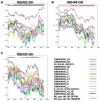
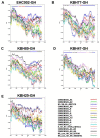


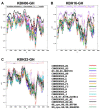
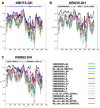

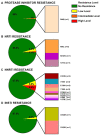


Similar articles
-
High prevalence of unique recombinant forms of HIV-1 in Ghana: molecular epidemiology from an antiretroviral resistance study.J Acquir Immune Defic Syndr. 2008 Aug 15;48(5):599-606. doi: 10.1097/QAI.0b013e3181806c0e. J Acquir Immune Defic Syndr. 2008. PMID: 18645511
-
Dynamic HIV-1 genetic recombination and genotypic drug resistance among treatment-experienced adults in northern Ghana.J Med Microbiol. 2017 Nov;66(11):1663-1672. doi: 10.1099/jmm.0.000621. Epub 2017 Oct 25. J Med Microbiol. 2017. PMID: 29068286
-
Identification of new, emerging HIV-1 unique recombinant forms and drug resistant viruses circulating in Cameroon.Virol J. 2011 Apr 23;8:185. doi: 10.1186/1743-422X-8-185. Virol J. 2011. PMID: 21513545 Free PMC article.
-
HIV-1 genetic diversity and drug resistance mutations in the northern Brazilian region.Braz J Infect Dis. 2021 May-Jun;25(3):101596. doi: 10.1016/j.bjid.2021.101596. Epub 2021 Jul 13. Braz J Infect Dis. 2021. PMID: 34270996 Free PMC article. Review.
-
Country Level Diversity of the HIV-1 Pandemic between 1990 and 2015.J Virol. 2020 Dec 22;95(2):e01580-20. doi: 10.1128/JVI.01580-20. Print 2020 Dec 22. J Virol. 2020. PMID: 33087461 Free PMC article.
Cited by
-
Replicative co-infections with human immunodeficiency virus 1 and 2 as well as hepatitis B and C virus in Ghanaian individuals.Eur J Microbiol Immunol (Bp). 2024 Oct 30;14(4):346-360. doi: 10.1556/1886.2024.00103. Print 2024 Dec 18. Eur J Microbiol Immunol (Bp). 2024. PMID: 39475752 Free PMC article.
-
Trends in HIV-1 pretreatment drug resistance and HIV-1 variant dynamics among antiretroviral therapy-naive Ethiopians from 2003 to 2018: a pooled sequence analysis.Virol J. 2023 Oct 25;20(1):243. doi: 10.1186/s12985-023-02205-w. Virol J. 2023. PMID: 37880705 Free PMC article.
-
Association of Molecular Detections of Microsporidia in Stool Samples with Clinical and Immunological Parameters in Ghanaian HIV Patients.Pathogens. 2024 Nov 29;13(12):1053. doi: 10.3390/pathogens13121053. Pathogens. 2024. PMID: 39770313 Free PMC article.
-
Slow virologic control but strong immune and metabolic recovery with dolutegravir-anchored therapy in an HIV cohort in Ghana.Virol J. 2025 Jul 19;22(1):247. doi: 10.1186/s12985-025-02873-w. Virol J. 2025. PMID: 40684209 Free PMC article.
-
Genetic landscape for majority and minority HIV-1 drug resistance mutations in antiretroviral therapy naive patients in Accra, Ghana.Heliyon. 2024 Jun 19;10(12):e33180. doi: 10.1016/j.heliyon.2024.e33180. eCollection 2024 Jun 30. Heliyon. 2024. PMID: 39022058 Free PMC article.
References
-
- Nweze J., Eke I., Nweze E. HIV/AIDS in sub-Saharan Africa: Current status, challenges and prospects. Asian Pac. J. Trop. Dis. 2017;7:239–256. doi: 10.12980/apjtd.7.2017D6-366. - DOI
-
- UNAIDS Global HIV & AIDS Statistics—Fact Sheet. [(accessed on 1 September 2022)]. Available online: https://www.unaids.org/en/resources/fact-sheet.
-
- Hemelaar J., Elangovan R., Yun J., Dickson-Tetteh L., Fleminger I., Kirtley S., Williams B., Gouws-Williams E., Ghys P.D., Abimiku A.l.G., et al. Global and regional molecular epidemiology of HIV-1, 1990–2015: A systematic review, global survey, and trend analysis. Lancet Infect. Dis. 2019;19:143–155. doi: 10.1016/S1473-3099(18)30647-9. - DOI - PubMed
Publication types
MeSH terms
Grants and funding
LinkOut - more resources
Full Text Sources
Medical
Molecular Biology Databases

